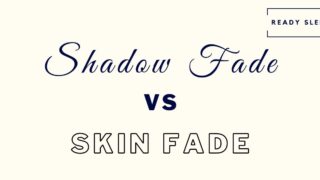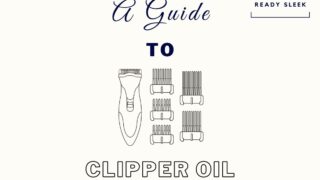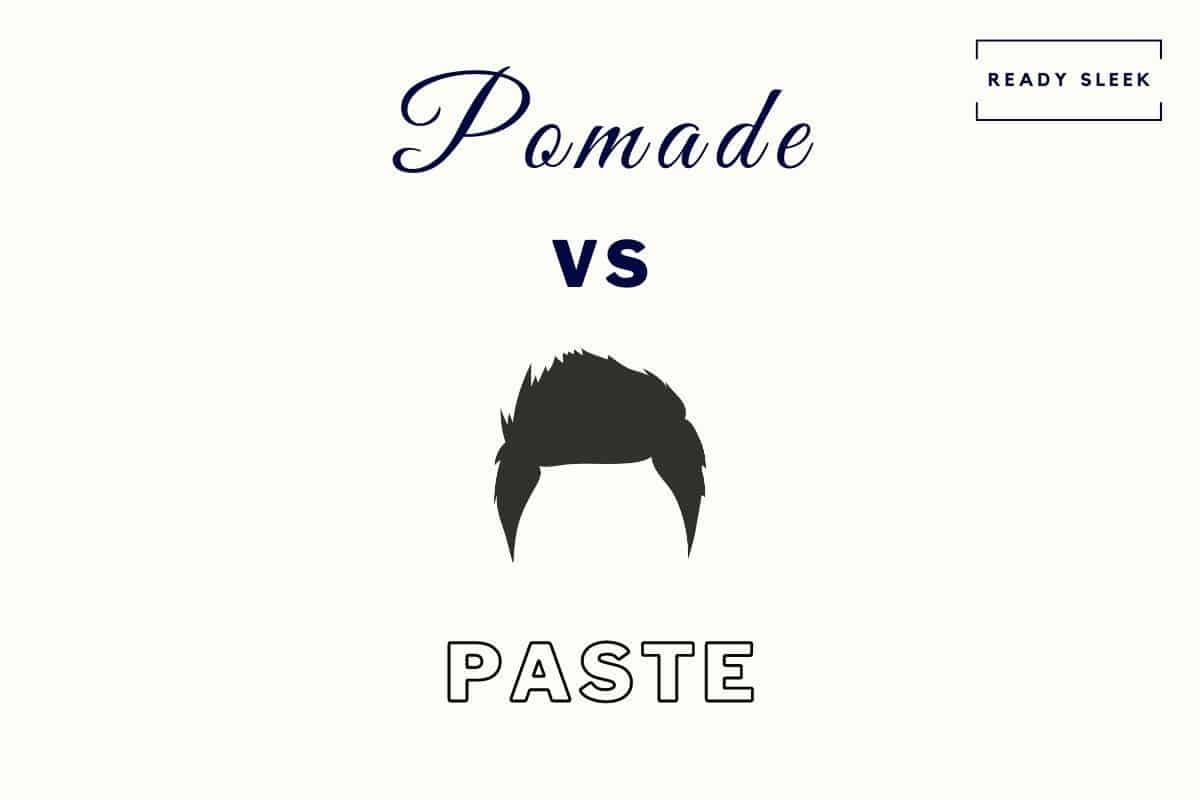“Skin fade”, “bald fade”, and “zero fade”, are probably all terms that you have heard before. Some mistakenly claim that all three styles are exactly the same. So, is there a difference?
While a skin fade and a bald fade are actually the same thing, a zero fade is different. A skin fade or bald fade requires shaving to blend the hair down to the skin, while zero fades leave very short stubble behind.
Zero fades do not blend all the way down to the skin and they do not require shaving.
Several people simply assume that a zero fade is yet another term for a skin fade or bald fade, as they all sound a bit similar, and the way all three terms get switched around can be a little confusing.
Not to worry, however. Keep reading to learn more about these specific fades, as well as what the differences are between them and how to choose which one is right for you.
Skin Fade Vs Bald Fade: Is There A Difference?
Skin fades and bald fades should always be considered the same thing. There is no difference between the effects they’re describing.
A “skin fade” or a “bald fade”, whichever you prefer, is a gradual transition from longer hair at the top of the head to much shorter hair that is blended to show skin at the bottom of the back and sides.
To create this look, a barber will use clipper guards of similar sizes near the top of the head to keep that hair longer. Clippers with a short guard are used to clip away a majority of the hair on the sides and near the neck.
The hair at the base of the neck and sides is shaved off with an electric shaver or razor to expose the skin completely.
Overall, a proper skin fade smoothly transitions from top to bottom. It should be blended well enough that it is difficult to tell where exactly the fade ends.
As with any fade (including a zero fade), skin fades can be low, middle, or high. They’re labeled like this according to how high up the head the shortest part of the fade reaches.
In skin fades, the shortest area is the shaved skin.
A “low skin fade” is where the shaved skin reaches as far as an inch above the top of the ear.

[From Shutterstock]
A “mid-skin fade” is where the shaved skin reaches halfway up the sides and back of the head.
A “high skin fade” is where the shaved skin reaches around the level of the temples, very close to the top of the head.
Knowing how to ask your barber for the skin fade you want is an essential skill to master.
I’ve written a whole article about it if you learn how, in addition to an article showing you how to know whether a skin fade is the right style for you in the first place.
What Is a Zero Fade?
A zero fade is a style that, like all fades, transitions from being longer at the top to gradually shorter near the bottom. The shortest hair in a zero fade is cut down to the shortest length possible without showing skin.

[From DepositPhotos]
This hair looks like a very short stubble, which creates a shadowed look at the bottom of the back and sides.
In order to get the shortest hair in a zero fade to this stubble length, barbers trim it with hair clippers that have no guard, which is known as a zero-grade trim.
Razors and shavers are not required for a zero fade, as this is not quite a clean shaved style, and no skin should be clearly exposed.
All you need is a clipper with no guard.
Skin Fade Vs Zero Fade: What’s The Difference?
Skin fades blend all the way down to the skin and they require an electric shaver to achieve. Zero fades only fade down as short as very short stubble, produced using a pair of clippers with no guard.
Both skin fades and zero fades are very popular. These fades are included in several men’s hairstyles to achieve a sharp look with some variety, as either can start high, low, or mid.
However, there are some key differences between a skin fade and a zero fade.
Skin fades and zero fades are both created with clippers, for the most part.
Skin fades are created by using a few different clipper guards from the top to the bottom, with a short clipper guard being used on the sides and the bottom.
But an electric shaver is then used to blend the bottom of a skin fade in order to actually reveal the skin. Shavers are not needed for a basic zero fade.
While a skin or bald fade blends all the way down to the skin, a zero fade blends down to a short stubble.
A skin fade will always leave the skin at the baseline of the head and the area below this line exposed, whereas a zero fade only exposes a little skin if tramlines, thin, shaved line designs, are included. A basic zero fade does not reveal any hairless skin.
Skin Vs Zero Fade: How to Choose
Now that you know the differences between a skin fade and a zero fade, you may be wondering which style you might prefer. Here are the two most important factors to consider when choosing between a skin fade and a zero fade:
Fade Maintenance
The best way to keep any type of fade looking its best is to touch it up every few days or so.
However, it is easier to maintain a skin fade by yourself than it is to maintain a zero fade. For a skin fade, you only need to shave the areas where your skin has been exposed.
Zero fades tend to require more delicate touch-ups, such as more zero-grade trims. If you do not mind going to the barbershop more regularly, they would be happy to do this work for you.
Hair Type
If you have very textured hair like tight curls, a skin fade tends to make for a very flattering contrast. The texture left on top will soften the transition up from the exposed skin.
In contrast, zero fades tend to suit men with very fine hair, as the stubble at the bottom is enough to make the hair on top look thicker.
By the way, there’s always the chance that ultra-short skin and zero fades aren’t the right choices for you. Check this article out if you wanted to see skin fades compared with longer fade lengths – the 1 fade and the 2 fade.
Frequently Asked Questions
Here are the answers to a couple of frequently asked related questions to really finish this topic up in style.
Zero Fade Vs Razor Fade: What’s The Difference?
A zero fade will fade down as short as very short stubble and not all the way down to the skin. In contrast, a razor fade will gradually taper down into shaved skin at the bottom of the sides and back, with the shaved portion specifically produced using a straight razor.
The only difference between a razor fade and a skin fade is that a simple skin fade won’t necessarily be produced using a straight razor.
It may just be done using an electric shaver.
Ultimately, a razor fade could be labeled a type of skin fade. I’ve written an article comparing razor fades to other types of fades if you’re interested in diving deeper.
Foil Fade Vs Skin Fade: What’s The Difference?
A foil fade is a specific type of skin fade that’s produced using an electric foil shaver. A skin fade can also be produced using a straight razor for a so-called “razor fade”.
Ultimately, both foil fades and razor fades should be thought of as types of skin fade.
What Is A Bald Skin Fade?
A bald skin fade is essentially any fade where the shortest portion at the bottom of the sides and back is shaved all the way down to the skin using a shaver or razor. The “bald” portion of the term “bald skin fade” is redundant – all skin fades are bald fades and vice versa.
Conclusion
Be mindful of any sources that lump skin fades, bald fades, and zero fades all together as the same hairstyle; this is incorrect.
While skin fades and bald fades are indeed the same hairstyle, a zero fade is not as blended and leaves very short stubble behind instead of showing skin at the sides and back.
Skin fades are easier for most men to maintain on their own, as they mainly just need to reshave the exposed areas of skin at the bottom.
However, both skin fades and zero fades are highly popular men’s hairstyles due to the variety and sharpness they provide.
Ready Sleek founder. Obsessed with casual style and the minimalist approach to building a highly functional wardrobe. Also a fan of classic, vintage hairstyles.







